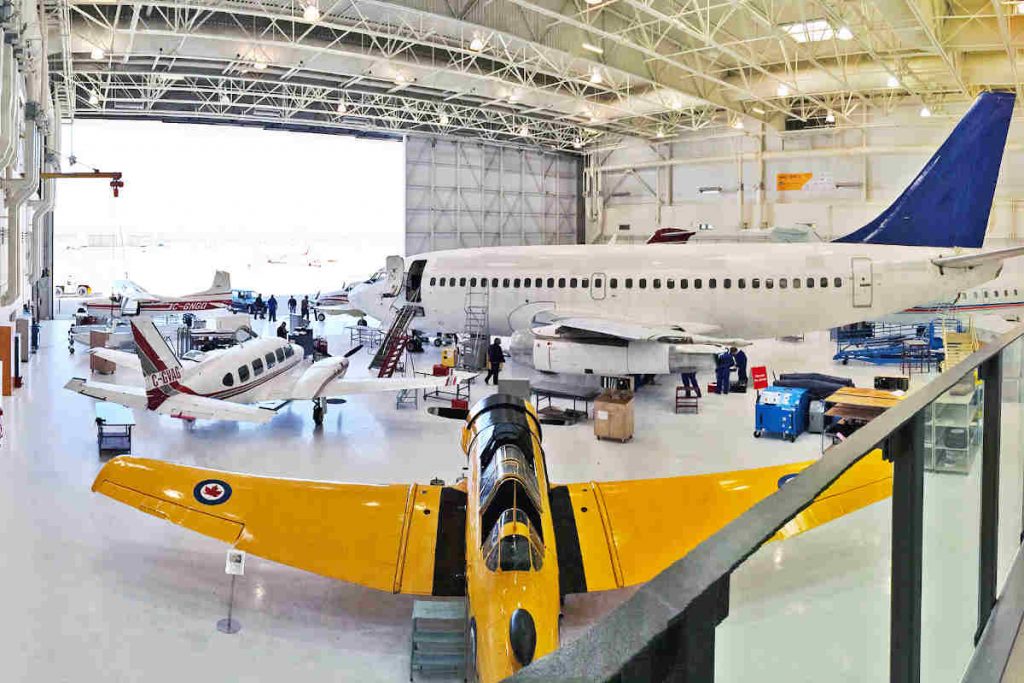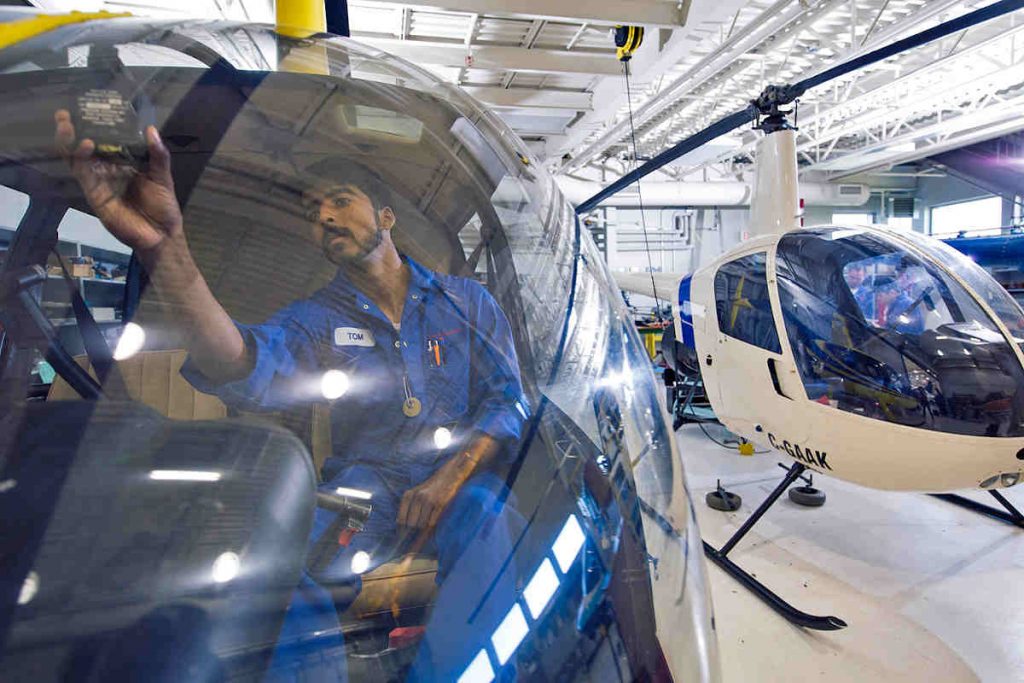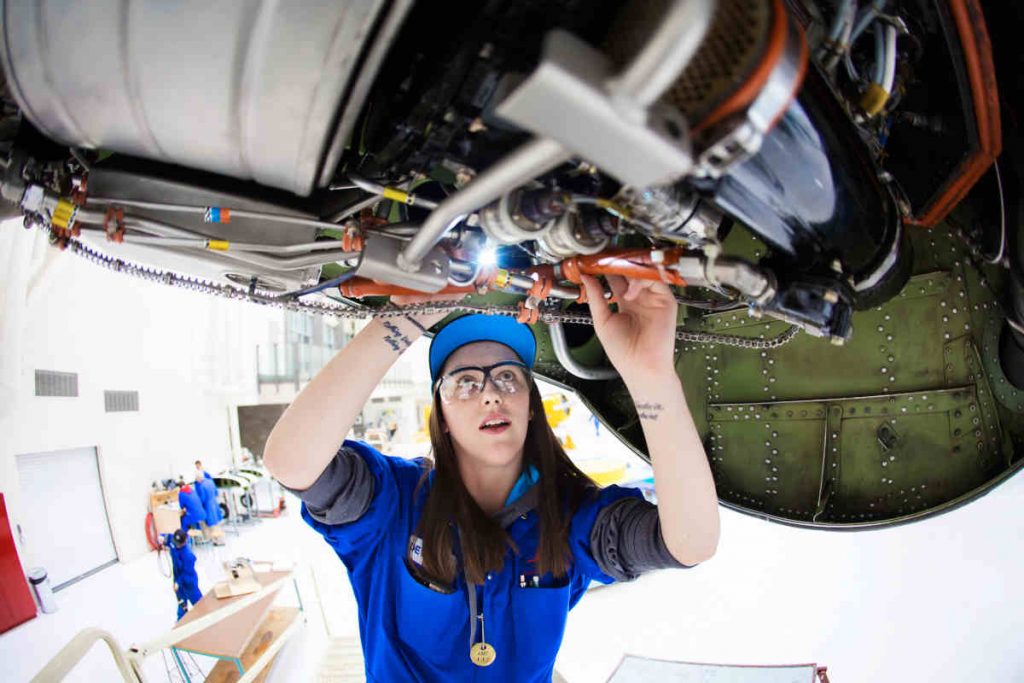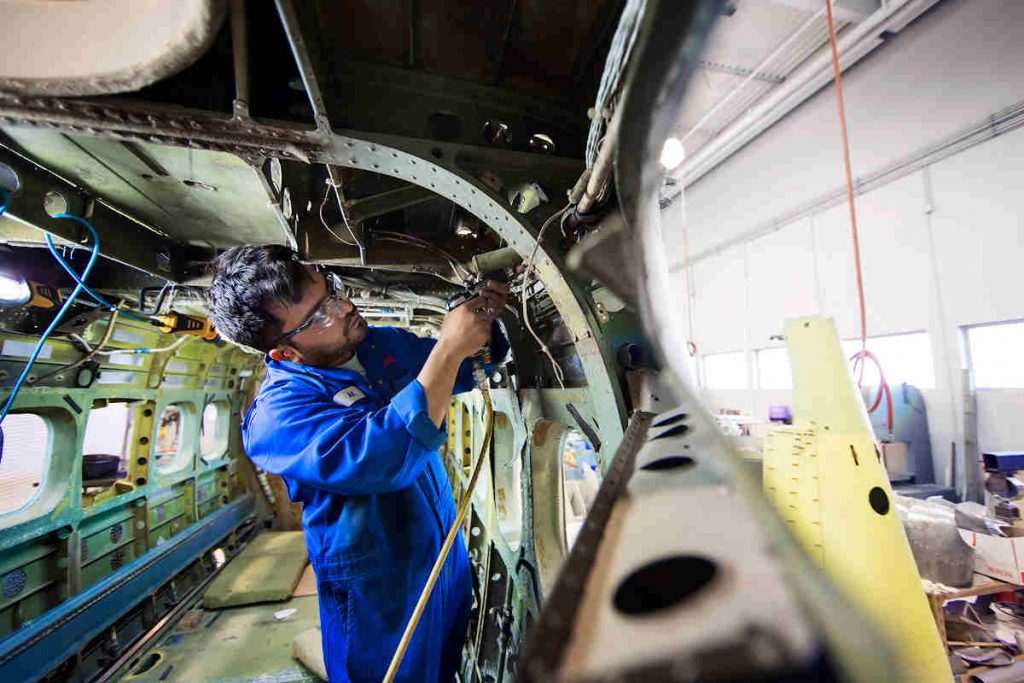
News
MRO
Training
SAIT, advanced aviation training at the Art Smith Aero Centre
Southern Alberta Institute of Technology’s AME programs are recognized globally
February 5, 2021 By Carroll McCormick
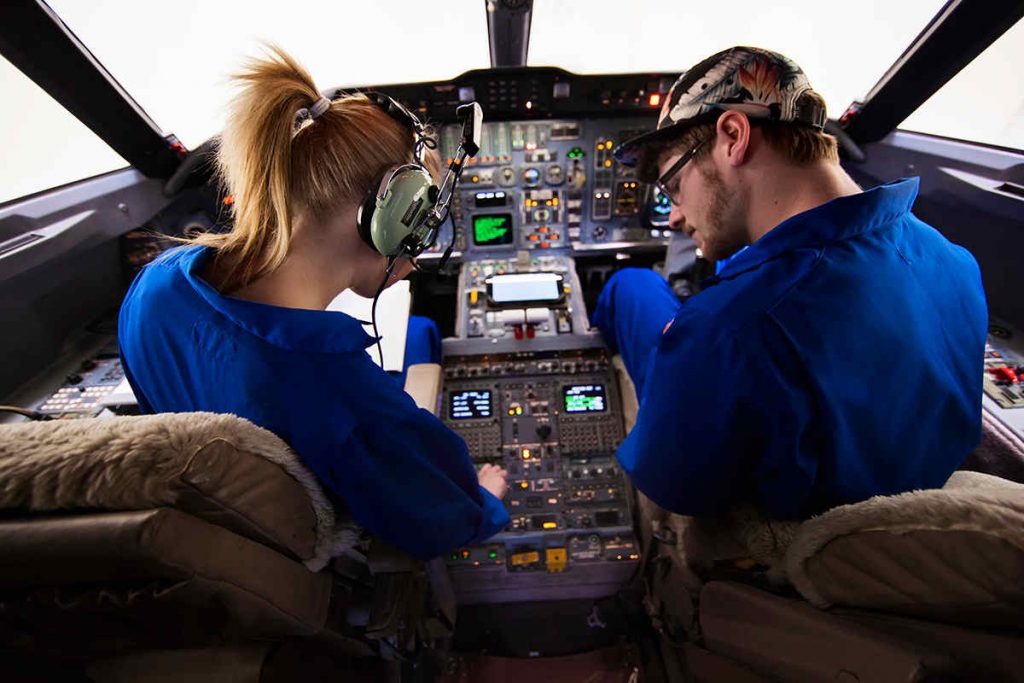 SAIT’s Avionics Technology program covers the servicing and repair of aircraft electrical and electronic systems and maintaining the aircraft communication, navigation and data systems. (Photo: SAIT)
SAIT’s Avionics Technology program covers the servicing and repair of aircraft electrical and electronic systems and maintaining the aircraft communication, navigation and data systems. (Photo: SAIT) Training in a large and superbly equipped facility located at the Calgary International Airport – Canada’s fourth-busiest – students in the aircraft avionics, structures and maintenance programs enjoy a modern, industry-relevant, and highly immersive learning experience. Once they graduate they can go straight into industry jobs, and can earn their E, S or M category Aircraft Maintenance Engineer (AME) licences.
Called the Art Smith Aero Centre, the facility is one of the crown jewels of the Southern Alberta Institute of Technology (SAIT), a globally recognized name in aviation training. Completed in 2004, it occupies 17 acres (6.9 hectares) of airport land, has 128,000 square feet (11,900 square metres) of apron with airside access, a 21,000 square foot (1,950 square metres) hangar, seven state-of-the-art classrooms and 13 labs.
Aviation training at SAIT dates back to 1930. It launched the Aircraft Maintenance Technology program in 1957, the Avionics Technology program in 1975, and the Aircraft Structures Technician program in 1996. All of the programs are conducted in English.
Students come from all over the world to train at the Art Smith Aero Centre, but a first visit to the facility is only a few mouse clicks away as a splendid virtual tour on the SAIT website. Drop into the spotless hangar and “walk” around a dozen aircraft that include helicopters such as the Bell 206 and R44, a stunning Royal Canadian Air Force Harvard, a King Air 200, and two Challenger 601s. Not a hands-off museum, students get hands-on training at workbenches loaded with aircraft components, and on the aircraft themselves.
In fact, it is a point of pride at SAIT that students receive training in environments designed to replicate aviation industry workplaces. The structures lab, by virtue of being equipped to keep 32 students at a time busy, more resembles an aircraft manufacturing plant than a classroom.
“As you walk into the avionics shop, the most striking thing is that component overhaul shops in industry and our labs are purposefully very similar. The facility is modelled like you would see out in the industry,” says Stephanie Hogewoning, the Aviation programs’ academic chair in the School of Transportation.
Hogewoning, herself an Avionics Technology alumnus, has observed an increase over the years in female applicants to the avionics and structures programs. She believes that there is a huge pool of qualified female candidates for careers in these fields.
The one-year Aircraft Structures Technician program, which accepts 32 students per year, covers all the aspects of aircraft structure repair to general aviation, corporate, charter, transport category aircraft, and helicopters. Training includes traditional aluminum sheet metal structure as well as advanced composite material manufacturing and repair. Successful students will receive a SAIT Aircraft Structures Technician certificate. Graduates with 95 percent attendance and minimum marks of 70 percent in each course will receive 10 months credit towards their S Category AME license.
The two-year Avionics Technology program, which typically accepts 32 students per year, covers all the aspects of aircraft avionics systems used in general aviation, corporate, charter, transport category aircraft, and helicopters, leading to a SAIT diploma in the sector. Graduates with 95 percent attendance and minimum marks of 70 percent in each course will receive a credit equivalent to 18 months of work experience towards the E category AME license from Transport Canada.
While the diploma and certificate are tickets into aviation careers, AME licences confer higher pay and more responsibility in the company. AME licence holders are also able to sign off on work and are better positioned to work their way up in company ranks.
SAIT’s industry partners enthusiastically support the Art Smith Aero Centre’s industry-like training environments with supplies, equipment, time and co-op programs. These close partnerships help the Art Smith Aero Centre keep its fingers on the pulse of industry.
Staying abreast of other pedagogical methods is also important. SAIT was already in the process of developing its digital content, but the COVID-19 pandemic accelerated those plans. “A big change in both programs is the significant increase in the use of our digital learning program, accelerated by COVID-19. This will provide us with a far more robust digital training program and allow students to immerse themselves in the program, with no limitations to what they can read and learn. We have been able to maintain our face-to-face contact in our labs, but our digital contact is a fantastic addition to the programs,” Hogewoning says.
As the commercial aviation industry recovers from the effects of the pandemic, the deficit in AMEs that was already looming before 2020 will only become greater. “Post-COVID, what we are going to see is a huge increase in demand. We are angling ourselves toward solving this with an expanded program. We are on a growth trajectory,” Hogewoning says. “In the post-COVID world we want to expand these programs to meet the needs of industry and double the number of students we take in.”
